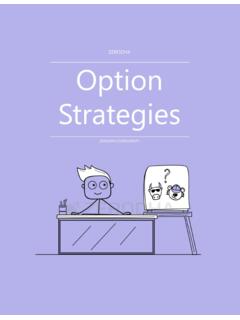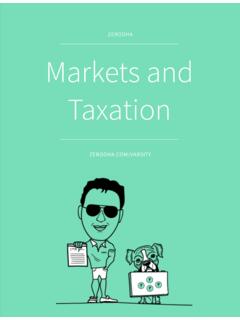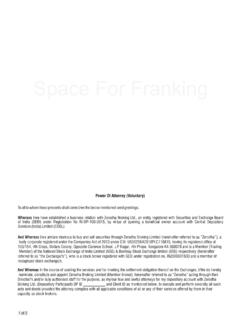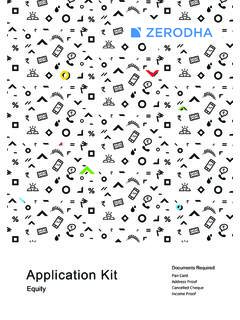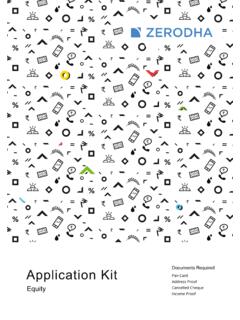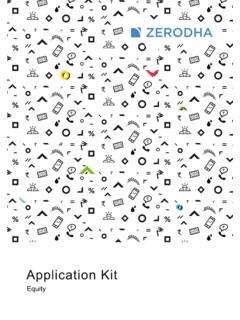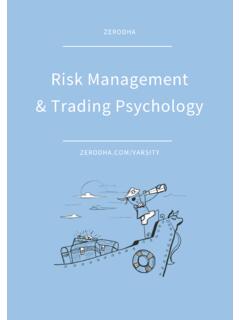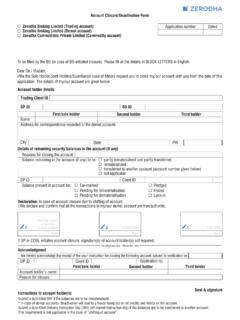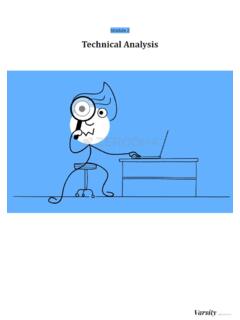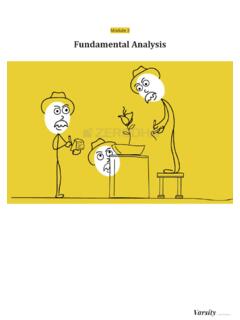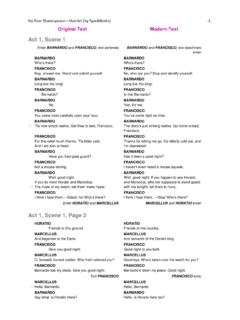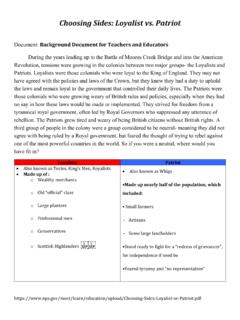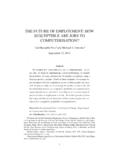Transcription of Currency & Commodity Futures
1 Z E R O D H A Currency & Commodity Futures Z E R O D H A . C O M / V A R S I T Y Table of Contents 1 Currency Basics 1 2 Reference Rates & Impact of events 9 3 Impact of events (Brexit) & Interest Rate Parity 20 4 The USD INR Pair (Part 1) 28 5 The USD INR Pair (Part 2) 39 6 EUR, GBP, and JPY 50 7 Gold (Part 1) 63 8 Gold (Part 2) 72 9 Silver 84 10 Crude Oil (Part 1), digging the past 95 11 Crude Oil (Part 2), the crude oil eco system 102 12 Crude Oil (Part 3), the crude oil contract 111 13 Copper & Aluminium 120 14 Lead & Nickel 132 15 Cardamom & Mentha Oil 144 16 Natural Gas 155 17 Commodity Options 164 1 C H A P T E R 1 Currency Basics Module Orientation At the onset, let me give you a quick orientation, so you can set your expectations for this module.
2 The focus of this module will be on three main topics 1. Currencies and Currency trading 2. Understanding Commodities 3. Interest Rate Futures I agree that each of these topics is vast, and commands an entire module on its own. However, these assets are not as liquid as equities. We are still at a very nascent stage when it comes to trading these alternate assets in India. Given this, the idea here would be introducing these assets, familiarize you with what drives these assets, and what you need to watch out for before placing your trades. So, in a sense, you could consider this module as a thought starter of sorts for trading these alternative assets.
3 Needless to say, we will try and discuss these topics to a reasonable depth, ensuring you have more than just the bare basics on these topics. We ll begin the module by discussing Currencies. We ll discuss some of the popular Currency pairs traded in India such as USD-INR, GBP-INR, and INR-JPY. We also discuss other (non INR) Currency pairs such as EUR-USD, GBP-USD, and USD-JPY. The discussion on currencies would be spread across a few chapters. The objective here would be to introduce these Currency pairs, and familiarize with not just the contract specification but also with a few fundamental factors that affect these currencies.
4 Once this is done, we ll move on to the next part of the module. This d deal with Commodities. We ll follow a similar template here introduce the commodities (both agri and non-agri) and get familiarize you with not just the contract specifications but also a few fundamental factors which would influence the movement of these commodities. Some of the commodities we ll be discussing would be Gold, Silver, Zinc, Aluminium, Crude oil, Natural Gas, Turmeric, Cardamom, Pepper, Cotton, etc. Of 2 course, the formula to calculate the price of commodities such as Gold, based on the price of Gold in International markets will also be discussed.
5 Lastly, this module will discuss Interest Rate Futures (IFR) , which I think is a very exciting space. The discussion would deal with topics related to RBI s borrowing pattern, issuance of sovereign bonds, listing on NSE, and eventually trading them. Based on how we progress, we can even touch topics related to bond trading and bond trading strategies. As you see, we have some really interesting stuff lined up. I believe this ll be a great learning experience for you, and me! Please note, the prerequisites for this course 1. Futures Trading 2. Options Theory 3. Technical Analysis The above mentioned topics are absolutely essential before learning about currencies.
6 I d suggest you brush up these topics before proceeding. Let s now begin this module by discussing few basics about currencies. Currency (in)equality Before we get started on currencies, let me share with you an interesting conversation I had with my 6-year-old daughter. Perhaps this could set a good starting point for our discussion on currencies. I had recently been to Austria with my family on vacation. As you can imagine, the country is extremely beautiful. It was my daughter s first visit to Europe and she was in complete awe. Needless to say, she was attracted to all the small little stores selling pretty little things. On one of the days while we were there, she forcibly took me to this toy store she spotted off the street, and I knew I was in for trouble.
7 After spending about 5-10 minutes scanning through the shop, she finally picked up a colourful wooden caterpillar, and she wanted me to buy her that. It looked really nice, and I was willing to buy her that, until I saw the price! The wooden caterpillar had a 25 Euro price tag. I thought I d negotiate with her and buy her something else. 3 I tried telling her that it was 25 Euros, and 25 Euros was quite steep especially for a tiny wooden caterpillar! She obviously didn t understand my point, and refused to budge from her stance. In fact, she said it s just 25 Euros , and I realised that she equated 25 Euros to 25 Rupees, completely oblivious to the fact that she needs to multiply each Euro with 78 to get the exact Rupee equivalent.
8 However, this got me thinking why isn t one Euro or for that matter one Dollar equal to one Rupee? More generally why isn t one unit of Currency belonging to country A equivalent to another unit of Currency belonging to country B? I understand this may sound very basic and some of you may already know the answer, but I think it is very important to discuss this and understand why the inequality between currencies exists. After all, it is this inequality which allows us to trade the Currency pairs. To understand this, we need to brush up a bit on the history of currencies and how Currency trading evolved. Don t worry , I won t get into history lessons here; will restrict this to a quick recap.
9 For the sake of simplicity, let me break this down into different stages for you based on my own understanding of the evolution of Currency . Stage 1 The Barter era Before the advent of currencies, transactions occurred through something called the barter system . Barter system is a method of exchange which has existed for many centuries. In a typical barter, people exchange goods for other goods (or services). A classic example would be say a farmer has harvested cotton, he could exchange (or barter) cotton with another farmer giving him wheat. Similarly, a farmer who has 4 oranges could exchange the oranges he has harvested with someone who agrees to wash his cows and sheep.
10 The problem with the barter system was the scale and divisibility of the system. For example, assume a farmer had 5 bales of cotton and he wants to barter cotton with someone selling cattle, assuming 2 bales for 1 cow, after the barter he d be left with 2 cows and a bale of cotton. He would certainly not get half a cow for 1 bale of cotton. This caused a divisibility issue within the system. The scalability was also an issue with the barter system it required our farmer to travel from one part of the country (with all his produce) to another part of the country to barter for goods of his choice. Both these issues were eventually overcome with an improved system Goods for metal.
